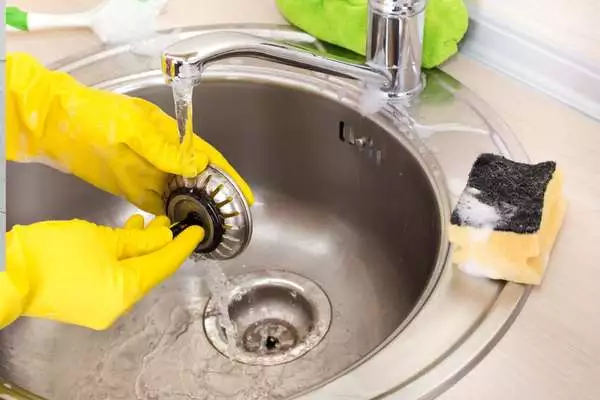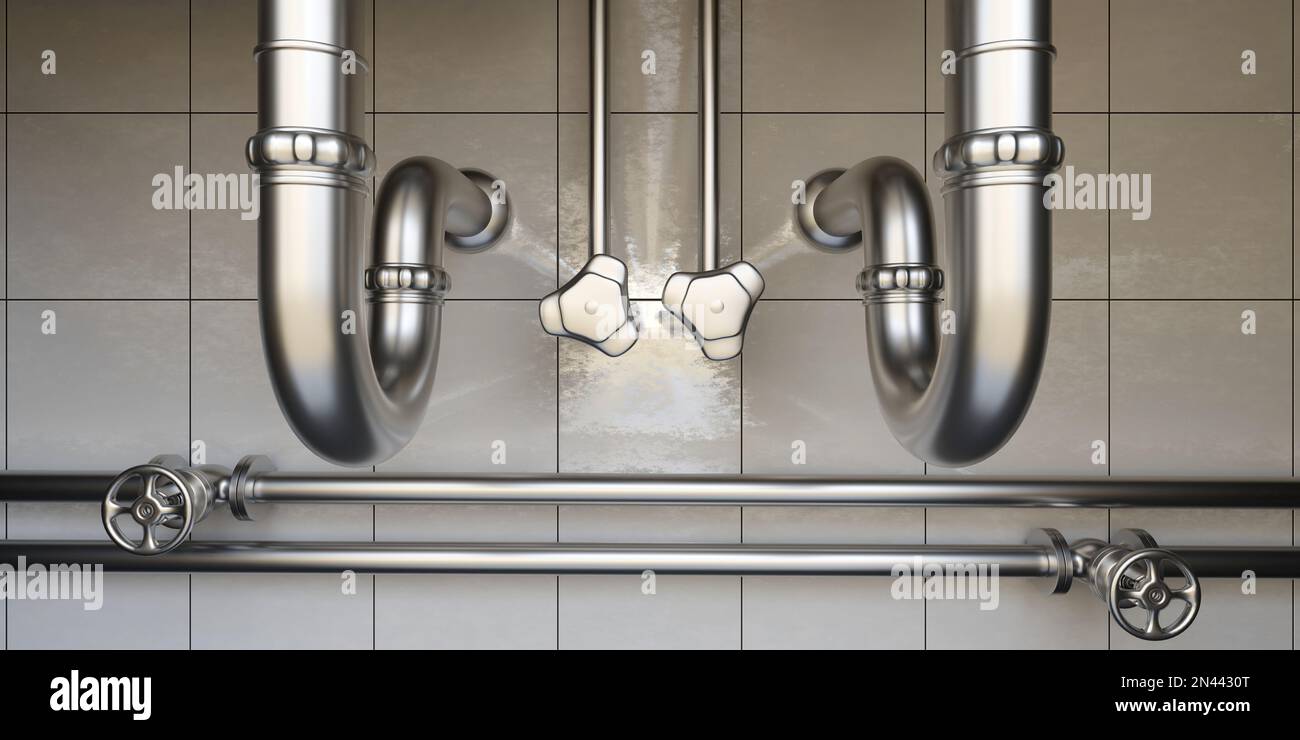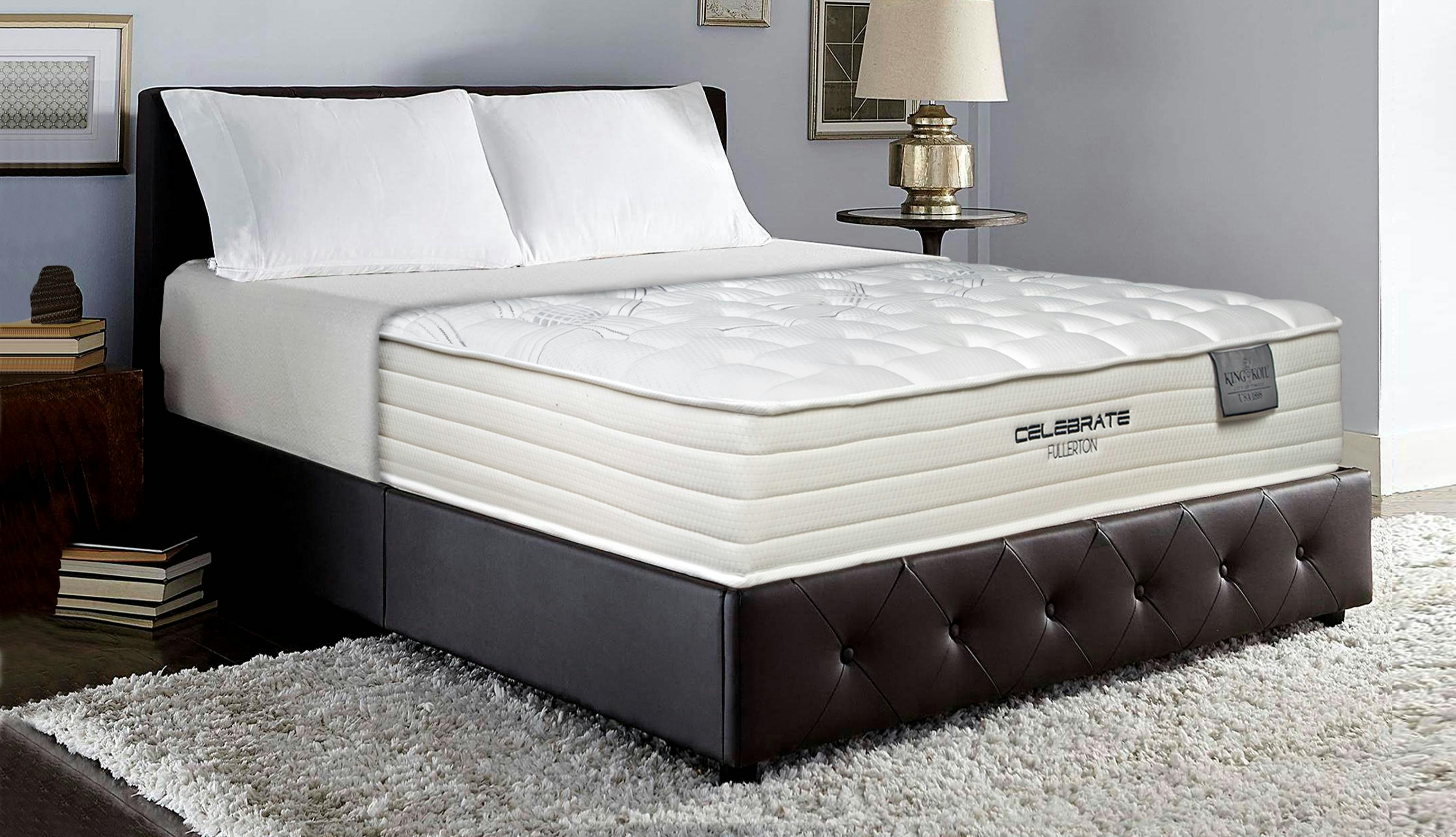When it comes to installing a kitchen sink drain, one of the most important factors to consider is the type of piping you will use. There are various options to choose from, each with its own set of advantages and disadvantages. Some common types of piping used for kitchen sink drains include PVC, copper, and galvanized steel. PVC piping is a popular choice for kitchen sink drains due to its affordability and ease of installation. It is also resistant to corrosion and can handle high water pressure. However, it may not be as durable as other types of piping and can become brittle over time. Copper piping, on the other hand, is known for its durability and resistance to corrosion. It is also a good choice for hot water systems as it can withstand high temperatures. However, it is more expensive than PVC piping and may require professional installation. Galvanized steel piping is another option for kitchen sink drains, but it is not as commonly used due to its tendency to corrode over time. It is also heavier and more difficult to work with compared to other types of piping.Types of Piping for Kitchen Sink Drain
Installing piping from the wall to the kitchen sink drain may seem like a daunting task, but with the right tools and knowledge, it can be a relatively simple DIY project. Here are the basic steps to follow: 1. Measure and cut the piping to the appropriate length using a hacksaw or pipe cutter. 2. Sand the edges of the cut piping to smooth them out. 3. Attach the piping to the wall using brackets or straps to secure it in place. 4. Connect the piping to the sink drain using appropriate fittings and sealants. 5. Test the piping for leaks and make any necessary adjustments. If you are not confident in your DIY skills, it is always best to hire a professional plumber to install the piping for you to ensure it is done correctly and prevent future issues.How to Install Piping from Wall to Kitchen Sink Drain
While installing piping from the wall to the kitchen sink drain can be a straightforward process, there are some common problems that may arise. These include: 1. Leaks due to improper installation or damaged piping. 2. Clogs caused by food debris, grease, or other materials in the drain. 3. Corrosion or rust on the piping, especially if using galvanized steel. 4. Improper slope or venting, leading to slow drainage or foul odors. It is important to address these issues promptly to prevent further damage and maintain the proper functioning of your kitchen sink drain.Common Problems with Piping from Wall to Kitchen Sink Drain
As mentioned earlier, PVC, copper, and galvanized steel are commonly used materials for piping from the wall to the kitchen sink drain. However, there are other options to consider, such as: 1. PEX piping, which is a flexible and easy-to-install alternative to traditional piping materials. It is also resistant to corrosion and freezing. 2. Cast iron piping, which is durable and can handle high water pressure. However, it is heavier and may require professional installation. Ultimately, the best material for your piping will depend on your budget, personal preferences, and the specific needs of your kitchen sink drain.Best Materials for Piping from Wall to Kitchen Sink Drain
If you are planning to install piping from the wall to your kitchen sink drain as a DIY project, here are some tips to keep in mind: 1. Make sure you have all the necessary tools and materials before starting the installation process. 2. Measure and cut the piping carefully to ensure a proper fit. 3. Use appropriate fittings and sealants to prevent leaks. 4. Test the piping for leaks and make any necessary adjustments. 5. If you encounter any difficulties or are unsure about the installation process, do not hesitate to seek professional help.DIY Guide for Piping from Wall to Kitchen Sink Drain
The cost of piping from the wall to the kitchen sink drain will depend on various factors, such as the type of piping, materials used, and the complexity of the installation. On average, homeowners can expect to spend anywhere from $150 to $400 for a professional installation. DIY installations may be cheaper, but it is important to factor in the cost of tools and materials.Cost of Piping from Wall to Kitchen Sink Drain
To ensure your piping from the wall to the kitchen sink drain remains in good condition, here are some tips to follow: 1. Regularly check for leaks and address them promptly. 2. Avoid pouring grease or other materials down the drain. 3. Use a drain cover to catch food debris and prevent clogs. 4. Have your plumbing system inspected and maintained by a professional plumber every few years.Tips for Maintaining Piping from Wall to Kitchen Sink Drain
Properly installed piping from the wall to the kitchen sink drain is crucial for the overall functioning of your plumbing system. It ensures proper drainage, prevents leaks and clogs, and can extend the lifespan of your kitchen sink and surrounding areas. It also helps maintain the hygiene and cleanliness of your kitchen.Importance of Properly Installed Piping from Wall to Kitchen Sink Drain
If you are experiencing problems with your piping from the wall to the kitchen sink drain, here are some troubleshooting steps to follow: 1. Check for any visible leaks and address them promptly. 2. Use a plunger or drain snake to remove any clogs in the drain. 3. Inspect the piping for any signs of damage or corrosion. 4. If the issue persists, it is best to consult a professional plumber for a thorough inspection and repair.How to Troubleshoot Issues with Piping from Wall to Kitchen Sink Drain
For a hassle-free and reliable installation of piping from the wall to your kitchen sink drain, it is best to hire professional plumbing services. A licensed plumber will have the expertise and experience to ensure the proper installation of the piping, as well as address any potential issues and provide maintenance tips for long-term functionality. With the right materials, proper installation, and regular maintenance, your piping from the wall to the kitchen sink drain can provide efficient drainage for your kitchen for years to come.Professional Services for Piping from Wall to Kitchen Sink Drain
The Importance of Proper Piping From Wall to Kitchen Sink Drain

Ensuring a Smooth Flow of Water
 When it comes to designing a functional and efficient kitchen, proper piping is an essential aspect that should not be overlooked. One of the critical areas that require careful consideration is the piping from the wall to the kitchen sink drain. This may seem like a minor detail, but it plays a vital role in ensuring a smooth flow of water in your kitchen plumbing system. In this article, we will discuss the importance of proper piping in your kitchen and why it is crucial to pay attention to this aspect of house design.
Efficient Drainage System
The main purpose of piping from the wall to the kitchen sink drain is to ensure an efficient drainage system. The pipes act as a channel for all the wastewater from your sink to flow into the main sewer line. If the piping is not done correctly, it can lead to clogs, leaks, and other plumbing issues. This can cause inconvenience and even damage to your kitchen and home. Therefore, it is essential to have a well-designed and properly installed piping system to ensure the efficient drainage of water from your kitchen sink.
Prevention of Water Damage
Improper piping can also lead to water damage in your kitchen. When pipes are not connected correctly or have leaks, it can cause water to seep into your walls, floors, and cabinets. This can not only damage your kitchen but also lead to mold growth, which can pose a health hazard to you and your family. Properly installed piping from the wall to the kitchen sink drain can prevent these issues and save you from costly repairs in the long run.
Maximizing Space and Aesthetics
Another reason why proper piping is crucial in house design is that it helps maximize space and aesthetics in your kitchen. With the right piping, you can have a clutter-free and organized kitchen as the pipes can be hidden behind walls or cabinets. This not only makes your kitchen look more visually appealing but also creates more space for storage and other essential kitchen appliances.
Ensuring Functionality
Last but not least, proper piping ensures the functionality of your kitchen. With a properly installed piping system, you can have a steady flow of water and efficient drainage, making it easier to wash dishes, cook, and clean in your kitchen. This can save you time and effort and make your kitchen experience more enjoyable.
In conclusion, proper piping from the wall to the kitchen sink drain is a crucial aspect of house design. It ensures an efficient drainage system, prevents water damage, maximizes space and aesthetics, and ensures the functionality of your kitchen. Therefore, it is essential to hire a professional plumber to design and install your kitchen piping to avoid any future plumbing issues. By paying attention to this small but vital detail, you can have a well-designed and fully functional kitchen that meets all your needs.
When it comes to designing a functional and efficient kitchen, proper piping is an essential aspect that should not be overlooked. One of the critical areas that require careful consideration is the piping from the wall to the kitchen sink drain. This may seem like a minor detail, but it plays a vital role in ensuring a smooth flow of water in your kitchen plumbing system. In this article, we will discuss the importance of proper piping in your kitchen and why it is crucial to pay attention to this aspect of house design.
Efficient Drainage System
The main purpose of piping from the wall to the kitchen sink drain is to ensure an efficient drainage system. The pipes act as a channel for all the wastewater from your sink to flow into the main sewer line. If the piping is not done correctly, it can lead to clogs, leaks, and other plumbing issues. This can cause inconvenience and even damage to your kitchen and home. Therefore, it is essential to have a well-designed and properly installed piping system to ensure the efficient drainage of water from your kitchen sink.
Prevention of Water Damage
Improper piping can also lead to water damage in your kitchen. When pipes are not connected correctly or have leaks, it can cause water to seep into your walls, floors, and cabinets. This can not only damage your kitchen but also lead to mold growth, which can pose a health hazard to you and your family. Properly installed piping from the wall to the kitchen sink drain can prevent these issues and save you from costly repairs in the long run.
Maximizing Space and Aesthetics
Another reason why proper piping is crucial in house design is that it helps maximize space and aesthetics in your kitchen. With the right piping, you can have a clutter-free and organized kitchen as the pipes can be hidden behind walls or cabinets. This not only makes your kitchen look more visually appealing but also creates more space for storage and other essential kitchen appliances.
Ensuring Functionality
Last but not least, proper piping ensures the functionality of your kitchen. With a properly installed piping system, you can have a steady flow of water and efficient drainage, making it easier to wash dishes, cook, and clean in your kitchen. This can save you time and effort and make your kitchen experience more enjoyable.
In conclusion, proper piping from the wall to the kitchen sink drain is a crucial aspect of house design. It ensures an efficient drainage system, prevents water damage, maximizes space and aesthetics, and ensures the functionality of your kitchen. Therefore, it is essential to hire a professional plumber to design and install your kitchen piping to avoid any future plumbing issues. By paying attention to this small but vital detail, you can have a well-designed and fully functional kitchen that meets all your needs.



/how-to-install-a-sink-drain-2718789-hero-24e898006ed94c9593a2a268b57989a3.jpg)


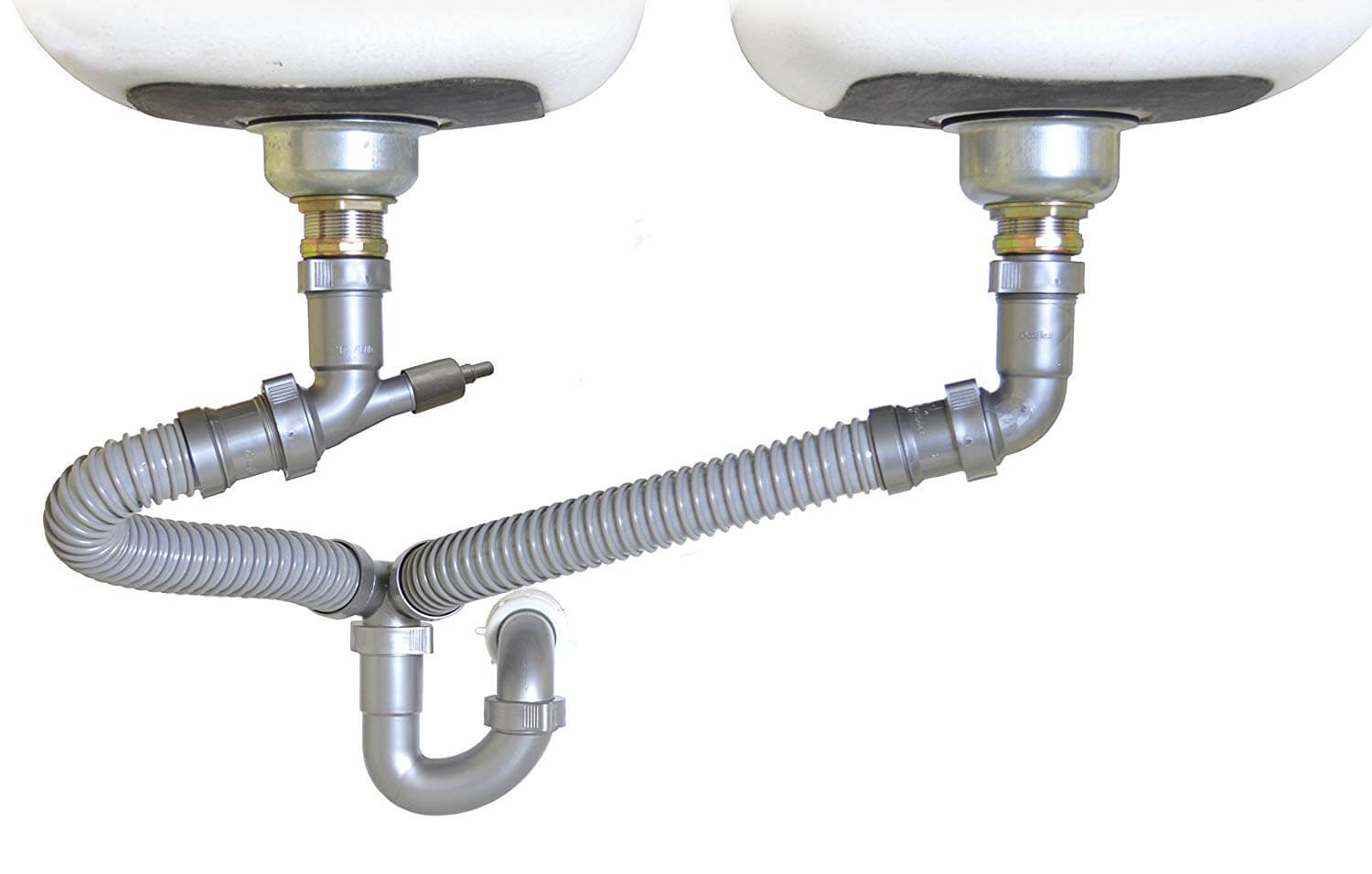





:max_bytes(150000):strip_icc()/how-to-install-a-sink-drain-2718789-hero-24e898006ed94c9593a2a268b57989a3.jpg)
/how-to-install-a-sink-drain-2718789-hero-b5b99f72b5a24bb2ae8364e60539cece.jpg)



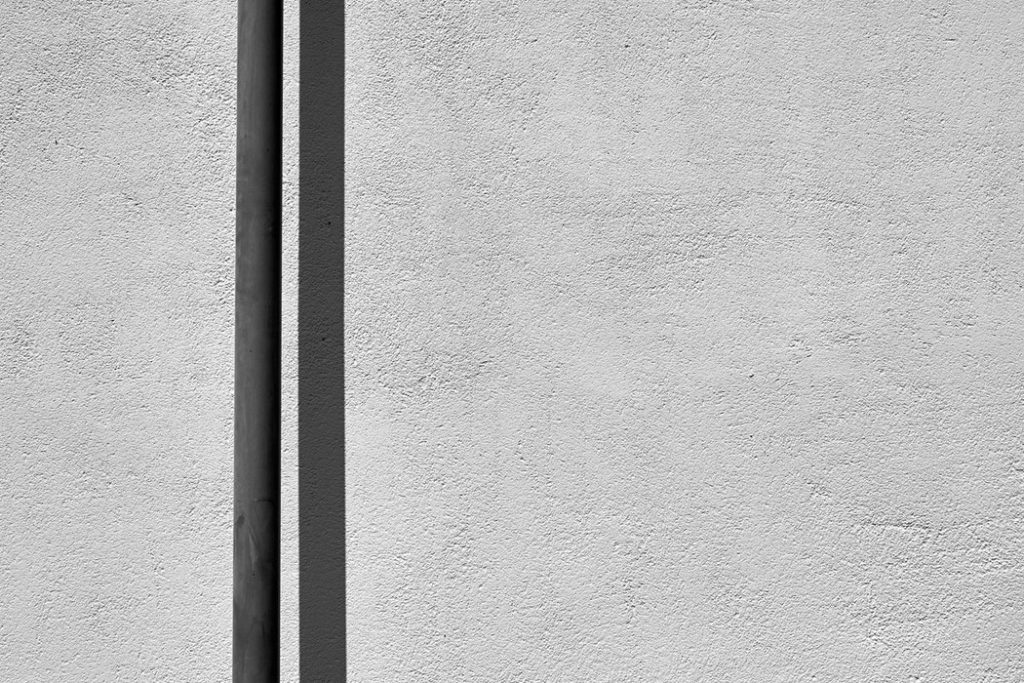














:no_upscale()/cdn.vox-cdn.com/uploads/chorus_asset/file/19495086/drain_0.jpg)
